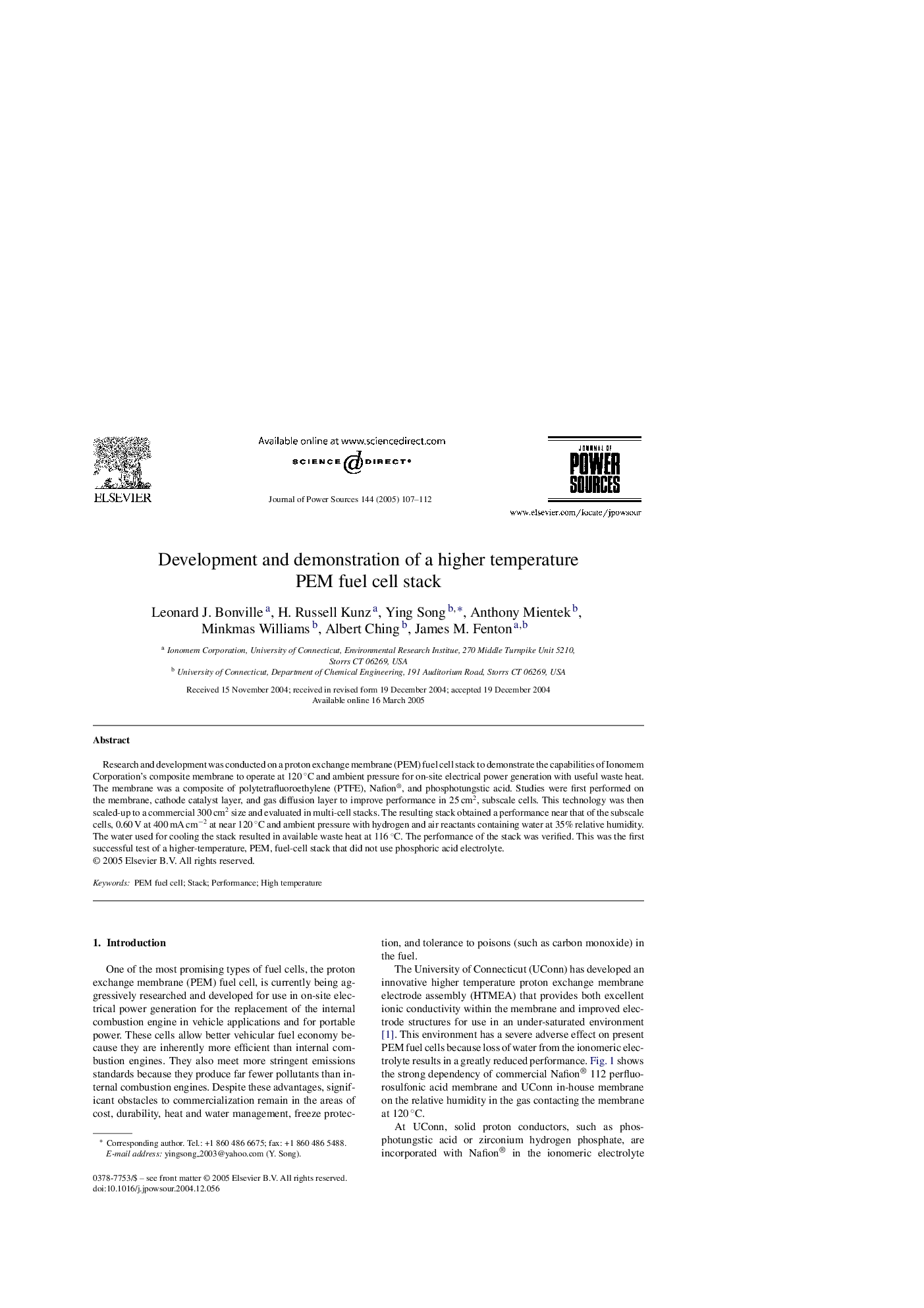| Article ID | Journal | Published Year | Pages | File Type |
|---|---|---|---|---|
| 10567367 | Journal of Power Sources | 2005 | 6 Pages |
Abstract
Research and development was conducted on a proton exchange membrane (PEM) fuel cell stack to demonstrate the capabilities of Ionomem Corporation's composite membrane to operate at 120 °C and ambient pressure for on-site electrical power generation with useful waste heat. The membrane was a composite of polytetrafluoroethylene (PTFE), Nafion®, and phosphotungstic acid. Studies were first performed on the membrane, cathode catalyst layer, and gas diffusion layer to improve performance in 25 cm2, subscale cells. This technology was then scaled-up to a commercial 300 cm2 size and evaluated in multi-cell stacks. The resulting stack obtained a performance near that of the subscale cells, 0.60 V at 400 mA cmâ2 at near 120 °C and ambient pressure with hydrogen and air reactants containing water at 35% relative humidity. The water used for cooling the stack resulted in available waste heat at 116 °C. The performance of the stack was verified. This was the first successful test of a higher-temperature, PEM, fuel-cell stack that did not use phosphoric acid electrolyte.
Related Topics
Physical Sciences and Engineering
Chemistry
Electrochemistry
Authors
Leonard J. Bonville, H. Russell Kunz, Ying Song, Anthony Mientek, Minkmas Williams, Albert Ching, James M. Fenton,
